
Greetings, all. Ambush Bug here with a special AICN HORROR: ZOMBIES & SHARKS column. For those of you who like to read your horror, I’ve got a quintet of books you might be interested in. Dr. Loomis and BottleImp have some cool books to tell you about and I’ll ring in at the end with an awesome offering from Guillermo Del Toro. Enjoy!
(Click title to go directly to the feature)
HOLES FOR FACES Anthology (2013)
EATERS OF MEN Script eBook (2013)
THE HOLE Novel (2013)
GUILLERMO DEL TORO’S CABINET OF CURIOSITIES Illustrated Book(2013)
HALLOWEEN: MAGIC, MYSTERY AND THE MACABRE Short Story Anthology (2013)
And finally… Gus Krieger’s M IS FOR MARMALADE!
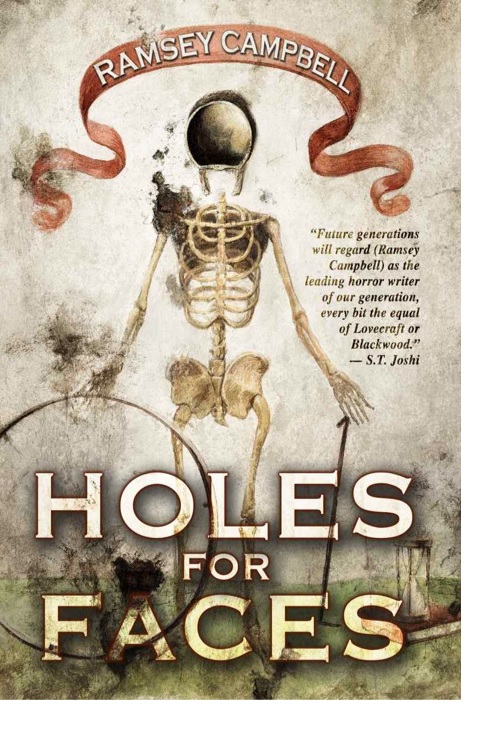
HOLES FOR FACES Anthology (2013)
Written by Ramsay CampbellPublished by Dark Regions Press
Reviewed by BottleImp
When sitting down at the table to dine on a meal of horror fiction, it’s important to remember that this fulsome repast is made up of a wide array of flavors to satisfy the many and varied tastes of the horror gourmand. For those who like their scares gritty, textural and Southern-fried, the spicy stories of Joe Lansdale hit the spot. People who prefer an aroma of exotic mystery might prefer the florid prose of H.P. Lovecraft. Then there’s Stephen King and his hearty, home-cooked dinner of ordinary people being thrust into extraordinary circumstances. All are good and filling, but for my own tastes, there’s no horror meal so satisfying as a mere spoonful of the simmering stew of nightmare and insanity cooked up by one of the field’s finest chefs—the great Ramsey Campbell.
British author Campbell began his career as so many other notable horror writers did, by aping Lovecraft and his dark cosmic fiction. But unlike the unlucky ones who never escaped Lovecraft’s shadow, Campbell quickly developed his own unique style, and over the years his prolific work has been giving readers nightmares through both novels and short stories. HOLES FOR FACES is the newest anthology of Campbell’s recent work, collecting the author’s scariest stories from the past decade. For readers of horror and fans of fear, this book should be required reading.
Nightmare and insanity—these two words best describe Campbell’s work. His writing style draws the reader into a world that seems very much like our own; in some ways Campbell is a stark realist. His settings are most often the city or the suburbs of his native Liverpool, and through many of his tales runs the thread of very real urban danger. But the fear of the threats of the city soon pale beneath the terrors that Campbell conjures up for his protagonists. These protagonists tend to be on either end of the scale when it comes to their ages; most of the characters in these stories are either children or the elderly, and both share in the same fear of being powerless against the forces of the world around them. Of course, neither age group realizes that the forces threatening them are not of this world until it’s far, far too late. This theme is best exemplified in “Peep,” wherein a grandfather’s childhood fear of a demented relative comes back to haunt him when the memory of a terrifying game of “peek-a-boo” is brought back by his grandchildren. “With The Angels” explores the same idea of a childhood trauma returning horrifically in later years.
The fears of childhood and the terrible sadness of dementia recur in “The Decorations,” a story that is sure to make you think twice about putting up the tinsel and holly this Christmas. The powerlessness of youth deepens into insanity in the collection’s titular story “Holes For Faces.” “Holding The Light” is a more classic campfire story of kids exploring places that they shouldn’t go, while Campbell gives his own unique spin on the social issues of censorship in “Chucky Comes To Liverpool.”
As for nightmares…you know those horrible dreams you have where you’re lost in a strange place? You can see where you need to go to get out, but every time you try to get there, the sight vanishes and you’re once again lost in a dark, twisted alien world, your exit forever tantalizingly out of reach? Ramsey Campbell is able to transcribe those nightmare visions in a way that no other writer can. “Passing Through Peacehaven,” “The Room Beyond” and “The Address” are three such stories, blending the nightmarish sense of being lost with the aforementioned theme of the fears of the elderly. “The Rounds” and “Recently Used” share in the surreal, dreamlike sense of the narrative, though at the end the reader is left with a sense not just of horror but of almost unbearable sadness—a more poignant sort of nightmare.
Though the supernatural—or at least the implication of the supernatural—is at play in many of the stories of this collection, some of Campbell’s best work deals not with fearful visions of the otherworldly but with those urban terrors mentioned earlier. “Getting It Wrong” has no vengeful spirits or demonic forces—just a poor schlub of a film snob finding himself immersed in what may be the world’s most horrifying game show.
HOLES FOR FACES will not be for everyone. Part of Campbell’s power as a writer to mesmerize the reader lies in his actual writing style; I’ll be the first to admit that someone used to reading the down-to-earth, no-nonsense style of, say, Stephen King will have to adjust their mindset when confronted by Campbell’s almost surreal prose. And there’s nothing wrong with that; if you enjoy a good steak dinner, there are a lot of delicious cuts of meat to be had out there. But if you want to broaden your experience and taste the exotic flavors cooked to perfection by a master of his craft, try a taste of Ramsey Campbell’s soup.
The nightmare are slowly simmering… just take a sip.
When released from his bottle, the Imp transforms into Stephen Andrade, an artist/illustrator/pirate monkey painter from New England. He's currently hard at work interpreting fellow @$$Hole Optimous Douche's brainwaves and transforming them into pretty pictures on AVERAGE JOE, an original graphic novel to be published by Com.x. You can see some of his artwork here.

EATERS OF MEN Script eBook
Written by Gayne C. YoungFind this book here!
Reviewed by Dr. Loomis
In 2010, Kopelson Entertainment (OUTBREAK, THE DEVIL’S ADVOCATE) optioned EATERS OF MEN, an original screenplay by journalist Gayne C. Young. The project has stalled out, but Young is determined to get his story in front of people, so he's released the script as an ebook. While reading screenplays is not usually my thing, I found this to be an entertaining ride, and I'm happy I gave it a shot.
EATERS OF MEN mixes classic fish-out-of-water elements with exotic African locales and a terrifying tribe of underground cannibals to produce a taut little thriller. It opens with a nighttime attack on a remote village that’s all quick cuts and darkness. It's teased that lions are responsible, but when it becomes apparent that people were dragged away rather than eaten on the spot, the villagers place blame on "barekas" - devils.
One of the missing is a minister who was in the village doing mission work, and his son quickly hops a plane with a family friend to try and track the minister down. Once there, the two employ a man named Campbell to help them find the minister and any others who may have survived.
The script follows a fairly routine formula from this point forward. Campbell is the seasoned jungle veteran, a mercenary type with a shady past and shady friends. Jonathan Brandt, son of the missing minister, is a college professor who finds he'll need to dig deep to find his survival instincts. Merial is the tough, beautiful mission worker who might become a love interest for Brandt. And, naturally, there are plenty of porters and villagers who get caught up in the expedition and serve just fine as cannibal cannon fodder.
Familiarity aside, Young has a knack for building tension, especially in the several scenes where the cannibals and Campbell's team meet up. Young writes articles and books on subjects like boar hunting and safaris, and he puts that knowledge to good use here in building atmosphere. He's also not afraid to shy away from the nasty side of things - there's a gruesome cobra attack early in the film, and his cannibals make the CANNIBAL HOLOCAUST guys look tame. These folks don't just eat flesh (although when they do, they do it with gusto) - they like to wear it, too. Our old pal Leatherface would have been right at home with these guys.
EATERS OF MEN might not bring anything overly original to the table, but in the right hands it could be a fun little thriller, with plenty of splatter to satisfy the gorehounds among us. Here's hoping it gets its chance.
EATERS OF MEN is available here!
“Dr. Loomis” is Blu Gilliand, a freelance writer whose work has appeared in the fright-filled pages of DARK SCRIBE, DARK DISCOVERIES, SHROUD MAGAZINE, FEARnet.com and Horror World, among others. He also runs his own blog, October Country, devoted to horror and crime fiction. Feel free to stalk him on Twitter (@BluGilliand) at your own risk.
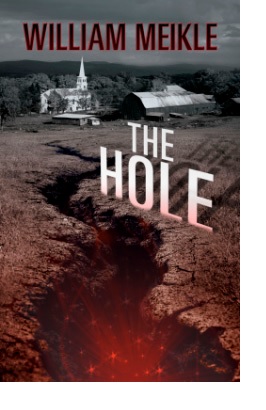
THE HOLE Novel (2013)
Written by William Meikle Published by DarkfuseReviewed by BottleImp
It begins with a strange humming noise…a vibration that comes up through the ground. Then the nosebleeds and headaches start to appear. A sinkhole opens up, a deep pit in the earth that rapidly grows in size. Other holes soon spring up all around the small town, engulfing houses, cars and the townspeople. But it’s the things that emerge from these pits that are the real danger.
That, in a nutshell, is the essence of THE HOLE, an effective page-turner by horror and science fiction author William Meikle. Meikle’s story of a tiny rural town’s struggle to escape the horrors released from beneath the earth is a blend of Stephen King and Dean R. Koontz, with a dash of H.P. Lovecraft thrown in for good measure. Like many of King’s stories, THE HOLE centers around a small, determined band of everyday people who are thrown together by extraordinary circumstances. The fast pace of the writing and some of the plot elements echo Koontz’s PHANTOMS, while Meikle gives a nod to the cosmic horrors that are the essence of Lovecraft’s work. The end result is a book that doesn’t quite achieve the sum of its parts, but is entertaining nonetheless.<br.
The triumphs and the shortcomings of THE HOLE are rooted in a single aspect of the story: the pacing. As I said, this book is one hell of a page turner; one of Meikle’s strengths as a writer is his ability to compel the reader to turn to the next chapter (a quality that Stephen King described as the “I gotta” factor, as in “I know it’s midnight and I have to get up at six tomorrow, but I gotta see what happens next”). In keeping the pacing tight and the word count low, Meikle eliminates needless embellishments from distracting from the plot, but he also misses out on the opportunity to give his characters the roundedness that they sorely miss. What the reader is left with as protagonists is an assortment of character types rather than fully-formed people. We have the stalwart sheriff, the intelligent doctor, the town drunk looking for redemption, the kid on the wrong side of the tracks with a heart of gold—and that’s pretty much where they start and end. I wish that Miekle had spent a little more time giving these templates more unique personalities; this would have given the reader a way to become more invested in their survival against the Hole and its inhabitants.
Another admittedly small but crucial detail that keeps this book from reaching its full potential lies in the language used. THE HOLE is set in a small rural community in the United States—the exact location is never given, but some details seem to indicate that we’re in the Northeast. William Meikle is not an American—he is Scottish by birth and a current resident of Canada, according to his author’s profile. The fact of his nationalities is made apparent by some of the word choices that jumped off the pages as I read. Meikle uses “windscreen” instead of “windshield.” A character makes a reference to the “lorries” on the road, and another character’s dialogue is peppered with the word “summat”—a colloquial regional pronunciation of the word “something” that I’ve never heard from the mouth of any American, but have previously seen most often in dialogue spoken by Hagrid in the “Harry Potter” books. We could chalk this up to editorial oversight, as I feel a good editor would be able to pick up on these inconsistencies between wording and locale, but no matter who’s to blame these British invasions are an unfortunately jarring detail.
Despite these detriments, THE HOLE is a tight novel that doles out some nice helpings of action and pulpy horror. And hey, it kept my interest up and kept me guessing right up until the end—and isn’t that really what a good book is all about?
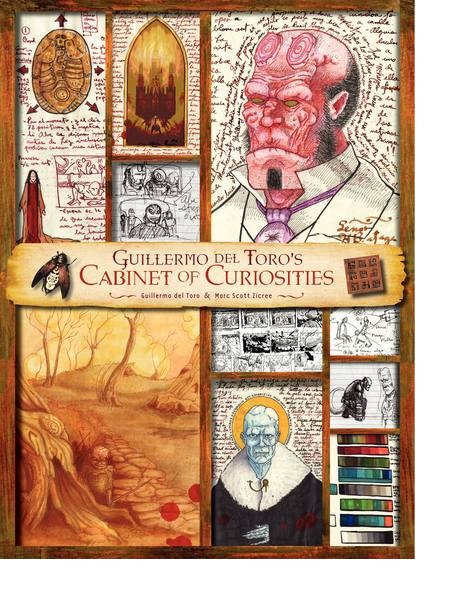
GUILLERMO DEL TORO’S CABINET OF CURIOSITIES Illustrated Book (2013)
Written by Guillermo Del Toro & Marc Scott ZicreeIllustrated taken from Guillermo Del Toro’s personal notebooks
Published by Harper Design
Reviewed by Ambush Bug
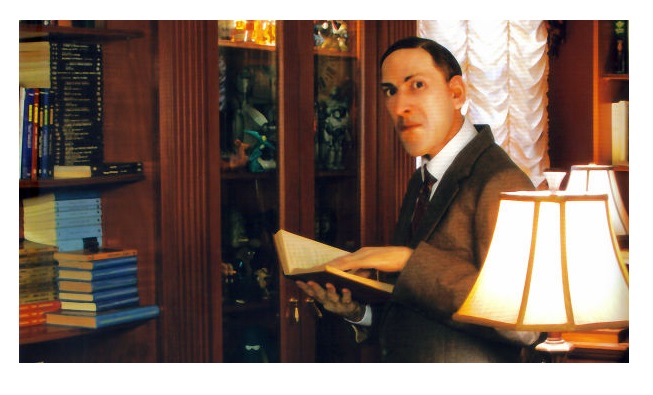 Unlike some of my AICN brethren who have actually talked with the guy, I don’t know Guillermo Del Toro outside of being an admirer of his films. But I am always interested in the backstories and behind the scenes aspects of what goes on in an artist’s mind and how they come up with those amazing stories. With that said, GUILLERMO DEL TORO’S CABINET OF CURIOSITIES feels like a book meant for me as it pulls back the dark curtain of Del Toro’s psyche and provides a clear look at his own artistic process in this collection of journal entries and photographs of both his own drawings as well as photos of things that inspired him through the years.
Unlike some of my AICN brethren who have actually talked with the guy, I don’t know Guillermo Del Toro outside of being an admirer of his films. But I am always interested in the backstories and behind the scenes aspects of what goes on in an artist’s mind and how they come up with those amazing stories. With that said, GUILLERMO DEL TORO’S CABINET OF CURIOSITIES feels like a book meant for me as it pulls back the dark curtain of Del Toro’s psyche and provides a clear look at his own artistic process in this collection of journal entries and photographs of both his own drawings as well as photos of things that inspired him through the years.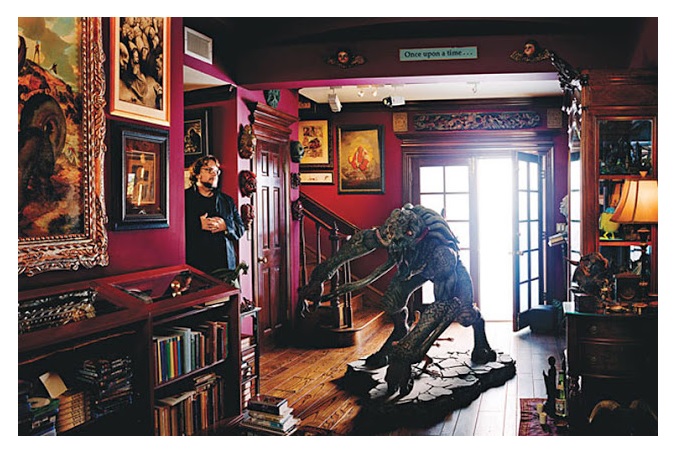 The first few chapters of this heavy hardcover book are structured as if you were taking a tour through Del Toro’s personal creative workshop. You get a tour of all of the rooms which house some of the souvenirs he’s collected through the years and items he’s amassed which inspire his dark fantasies. I was especially impressed at Del Toro’s creepy yet amazing collection of life-size sculptures he has “protecting” each room of his house, ranging from a more realistic than I am comfortable with fully clothed sculpture of H.P. Lovecraft looking over his private library to striking life-size recreations of cast members from Todd Browning’s FREAKS who hang out in the corners just waiting to give anyone who turns the corner a start. These detailed photos and descriptions make you feel like you’re really there, scanning the artifacts that Del Toro holds precious, and really give a good description of what inspired the director and what parts of his films he loved the most--for instance, the giant tentacle monster from HELLBOY stands ominously and ready to attach in the entranceway giving a memorable greeting for all who enter.
The first few chapters of this heavy hardcover book are structured as if you were taking a tour through Del Toro’s personal creative workshop. You get a tour of all of the rooms which house some of the souvenirs he’s collected through the years and items he’s amassed which inspire his dark fantasies. I was especially impressed at Del Toro’s creepy yet amazing collection of life-size sculptures he has “protecting” each room of his house, ranging from a more realistic than I am comfortable with fully clothed sculpture of H.P. Lovecraft looking over his private library to striking life-size recreations of cast members from Todd Browning’s FREAKS who hang out in the corners just waiting to give anyone who turns the corner a start. These detailed photos and descriptions make you feel like you’re really there, scanning the artifacts that Del Toro holds precious, and really give a good description of what inspired the director and what parts of his films he loved the most--for instance, the giant tentacle monster from HELLBOY stands ominously and ready to attach in the entranceway giving a memorable greeting for all who enter.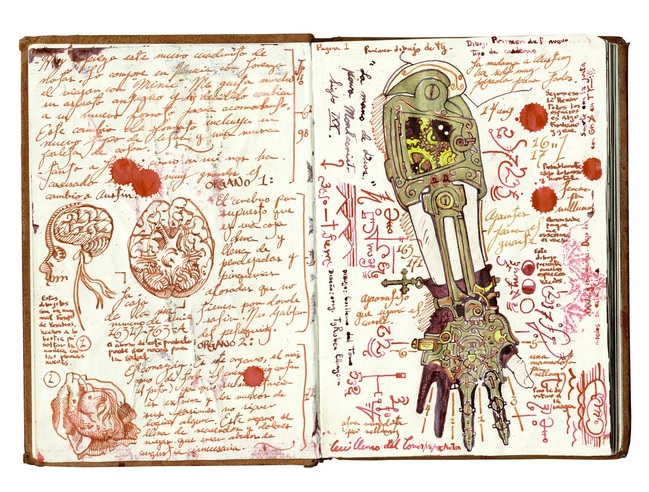 On top of that and most interesting to me, this book describes the childhood and formative years of Del Toro filling in the blanks of what parts of his films actually happened and what are part of his nightmares. Many metaphors in his films seem to be pulled from his youth. The way this book pulls back the curtain on Del Toro's psyche make this book precious and engrossing.
On top of that and most interesting to me, this book describes the childhood and formative years of Del Toro filling in the blanks of what parts of his films actually happened and what are part of his nightmares. Many metaphors in his films seem to be pulled from his youth. The way this book pulls back the curtain on Del Toro's psyche make this book precious and engrossing.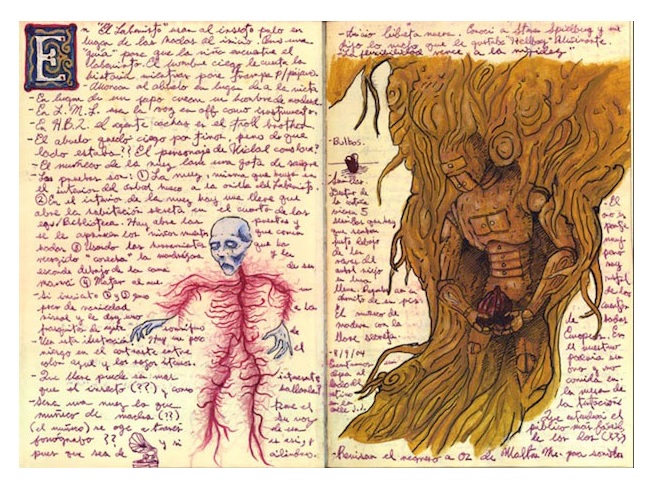 Each of Del Toro’s films are dissected and images and passages from his journals are photographed in their own special chapter. Modern sites like AICN provide a lot of the behind the scenes stuff for his latest films, but I enjoyed seeing the director’s sketches for MIMIC and CRONOS the most, since I haven’t seen these before. It was also amazing to see the sketches and story ideas for some of Del Toro’s well-publicized unmade works like AT THE MOUNTAINS OF MADNESS. The sketches and descriptions feel like I’m cheating a bit, since I always love to be surprised at the way Del Toro’s films will be portrayed on screen, but still, these snippets only make me want to see all of the complications worked out and actually be made some time very soon.
Each of Del Toro’s films are dissected and images and passages from his journals are photographed in their own special chapter. Modern sites like AICN provide a lot of the behind the scenes stuff for his latest films, but I enjoyed seeing the director’s sketches for MIMIC and CRONOS the most, since I haven’t seen these before. It was also amazing to see the sketches and story ideas for some of Del Toro’s well-publicized unmade works like AT THE MOUNTAINS OF MADNESS. The sketches and descriptions feel like I’m cheating a bit, since I always love to be surprised at the way Del Toro’s films will be portrayed on screen, but still, these snippets only make me want to see all of the complications worked out and actually be made some time very soon.Littered with personal essays talking about how Del Toro has influenced their own work from James Cameron, Tom Cruise, Neil Gaiman, John Landis, and Alfonso Cuaron, GUILLERMO DEL TORO’S CABINET OF CURIOSITIES is a rare glimpse into the brainpan of a master filmmaker and if you aren’t a fan of this man’s work, this book is sure to make you want to seek out his films and experience (or re-experience) them. This hardcover prices at $60.00 and it’s worth every penny.
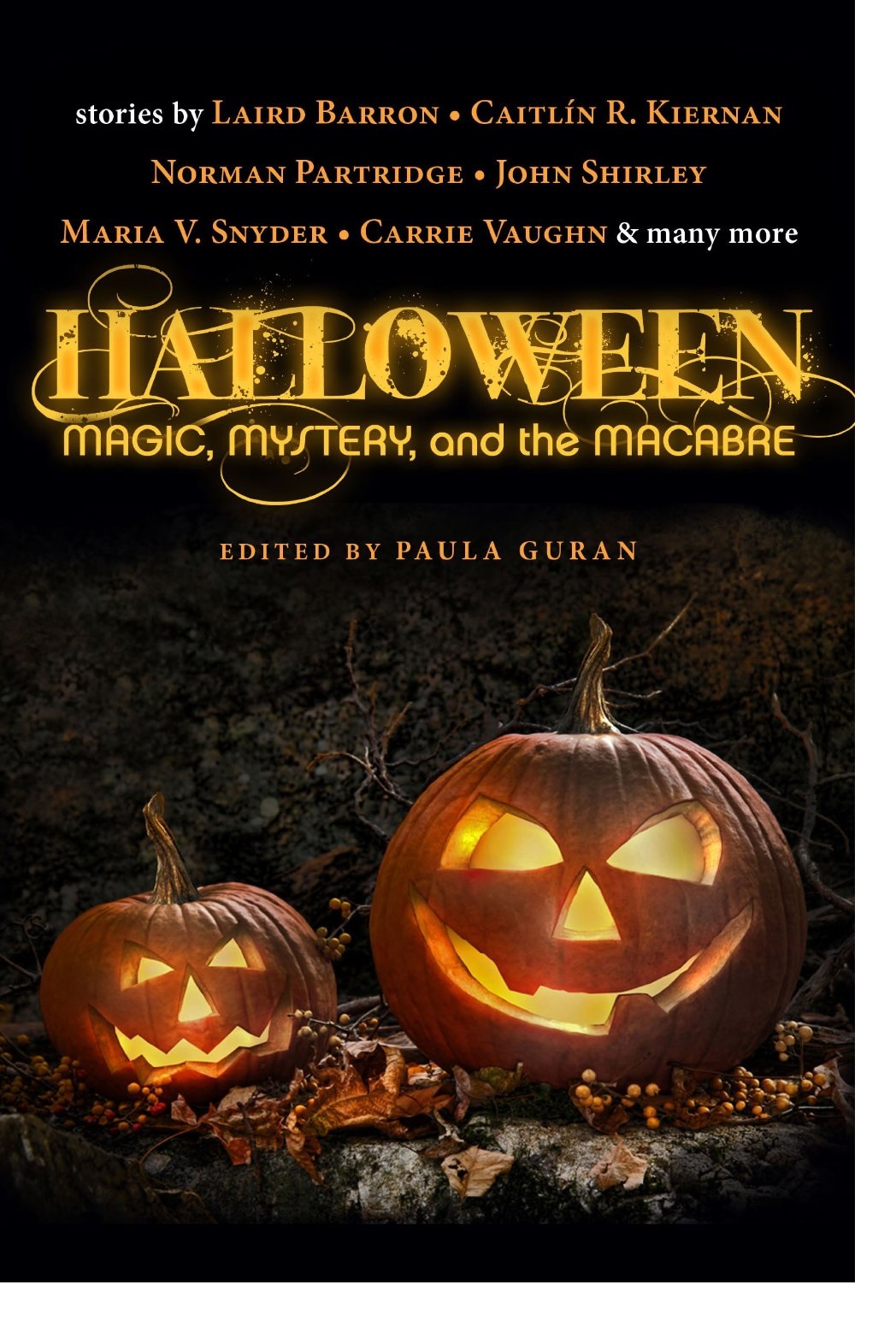
HALLOWEEN: MAGIC, MYSTERY AND THE MACABRE Short Story Anthology (2013)
Edited by: Paula GuranPublished by: Prime Books
Reviewed by: BottleImp
Halloween is a time for chills and scares. It’s a time for monsters and witches, ghosts and ghouls. It’s a time for costumes and candy. But it’s also a time when the barrier between the material world and the spirit world grows thin, and some may pass through from one side to the other. And though sometimes this is a cause for alarm, there can also be something comforting about meeting with those who have passed on to the other world. In HALLOWEEN: MAGIC, MYSTERY AND THE MACABRE, editor Paula Guran has assembled an impressive collection of stories that cover this wide array of seasonally-appropriate themes. Though I was initially disappointed that this book isn’t wall-to-wall scares, I can’t argue with the quality of storytelling found within.
The gentler side of the holiday leading into All Souls Day is explored by Brenda Cooper in “All Hallows In The High Hills,” as long- eparated friends meet again in a strange faerieland that borders the decidedly un-Halloweenlike land of sunshine, California. The border between worlds is again crossed in the gently folksy “Lesser Fires,” written by Steve Rasnic Tem and Melanie Tem, while the theme is given a slightly more relevant edge by a soldier returning to his home in Jonathan Maberry’s “Long Way Home: A Pine Deep Story.” The idea of visitors from the spirit world isn’t always sunshine and flowers, however—the darker side of All Hallow’s Eve is addressed by Jay Caselberg’s dark and dreamlike “Angelic,” where a family reunion on Halloween night has deeper undercurrents of meaning for one particular member of the family. “All Souls Day” by Barbara Roden gives a similar sense of danger to ghostly visitors, and Brian Hodge’s “We, The Fortunate Bereaved” adds a heartbreaking sense of loss and real-life horrors to his story of a town where, on Halloween night, the soul of one who recently died may come back for just a few scant moments.
That’s not to say that all the stories in this anthology are concerned with the spirit world—there’s still some good old-fashioned monsters to read about. Carrie Vaughn tells of a reluctant werewolf pressed into service for his fatherland in “Unternehmen Werwolf.” The hoary story of the cursed mummy is brought up to date with “The Mummy’s Heart,” written with Norman Partridge’s signature blend of visceral action, high tension and profound emotion. Witches are well represented by Nancy Kilpatrick’s suburban spellcaster in “Trick Or Treat,” and with a lighter sense of humor in A.C. Wise’s “For The Removal Of Unwanted Guests.” The lighter tone is carried over in one hospital ER’s most unlikely discovery of an alien invasion in Chelsea Quinn Yarbro’s “Quadruple Whammy.” A new kind of monster is created—or was it waiting to be born all along?—in Lawrence C. Connolly’s “Pumpkin Head Escapes.”
Though the variety of subjects found in the stories above are engaging, the stories that most enthralled me were the ones that went for the mystery and terror that the holiday inspires. Maria V. Snyder’s “The Halloween Men” is one of my favorites, set in a fantastic version of Venice where it is forbidden to go out in public without wearing a mask, except for one night of the year: Halloween. And woe to those who disobeyed the rules and had to face punishment from the Halloween Men. Then there’s Laura Bickle’s “From Dust,” a story of a farming family’s pact with strange dark forces, and what happens when that pact is broken. John Shirley tells of dark gods using cheap Chinese-manufactured plastic and rubber decorations as a means for revenge in the bizarre and blackly funny “And When You Called Us We Came To You.” Caitlin R. Kiernan spins a literally otherworldly tale of a festival far in the future that has its roots in our earthly Halloween in “Whilst The Night Rejoices Profound And Still.” Laird Barron lets the reader tag along on a surreal and dreamlike first date in “Black Dog.” My personal favorite in this collection, however, has to be its leadoff story, Stephen Graham Jones’ “Thirteen.” This highly original tale of a cursed movie theater has no blood or gore, but is written with an ominous sense of menace and horror that stuck with me the longest out of all the stories in this anthology, despite being the first one I read.
Though a little light on the hardcore horror for some fright fans, HALLOWEEN does a good job of giving its readers a wide range of well-crafted stories to choose from, and is recommended reading for this time of falling leaves, jack o’lanterns and voices from beyond the veil.
And finally…as I continue to spread the word about THE ABC’S OF DEATH 2’s competition for their open M slot in the anthology, this week’s short is M IS FOR MARMALADE from director Gus Krieger which sounds sweet, but most definitely is not. Enjoy!
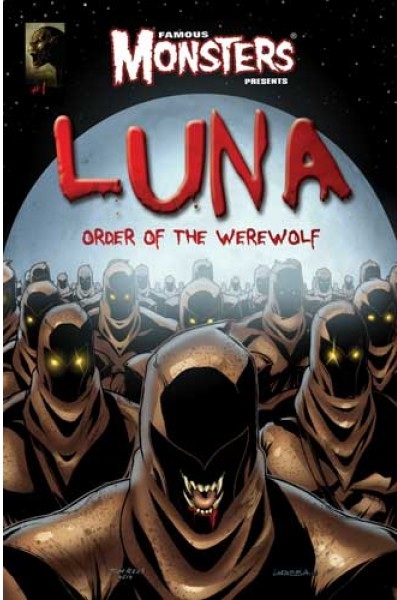
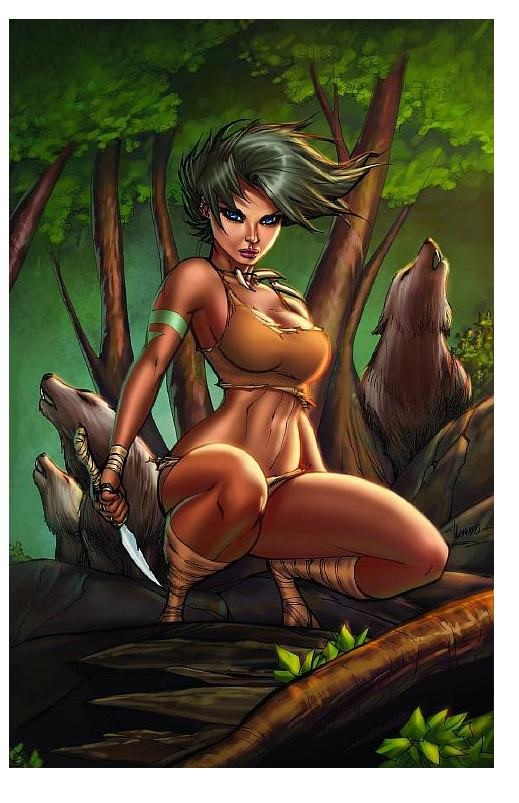 Ambush Bug is Mark L. Miller, original @$$Hole/wordslinger/writer of wrongs/reviewer/interviewer/editor of AICN COMICS for over 12 years & AICN HORROR for 4. Mark’s written comics such as THE TINGLERS & WITCHFINDER GENERAL, DEATHSPORT GAMES, NANNY & HANK (soon to be a feature film from Uptown 6 Films), Zenescope’sGRIMM FAIRY TALES Vol.13 & UNLEASHED: WEREWOLVES – THE HUNGER and a chapter in Black Mask Studios’OCCUPY COMICS. FAMOUS MONSTERS’ LUNA: ORDER OF THE WEREWOLF (co-written with Martin Fisher) will be available soon in trade. Mark also wrote the critically acclaimed GRIMM FAIRY TALES PRESENTS THE JUNGLE BOOK and its follow up THE JUNGLE BOOK: LAST OF THE SPECIES! Follow Ambush Bug on the Twitters @Mark_L_Miller.
Ambush Bug is Mark L. Miller, original @$$Hole/wordslinger/writer of wrongs/reviewer/interviewer/editor of AICN COMICS for over 12 years & AICN HORROR for 4. Mark’s written comics such as THE TINGLERS & WITCHFINDER GENERAL, DEATHSPORT GAMES, NANNY & HANK (soon to be a feature film from Uptown 6 Films), Zenescope’sGRIMM FAIRY TALES Vol.13 & UNLEASHED: WEREWOLVES – THE HUNGER and a chapter in Black Mask Studios’OCCUPY COMICS. FAMOUS MONSTERS’ LUNA: ORDER OF THE WEREWOLF (co-written with Martin Fisher) will be available soon in trade. Mark also wrote the critically acclaimed GRIMM FAIRY TALES PRESENTS THE JUNGLE BOOK and its follow up THE JUNGLE BOOK: LAST OF THE SPECIES! Follow Ambush Bug on the Twitters @Mark_L_Miller.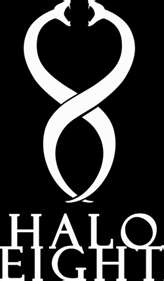
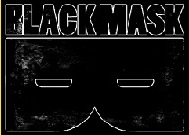
Interested in illustrated films, fringe cinema, and other oddities?
Check out Halo-8 and challenge everything!
